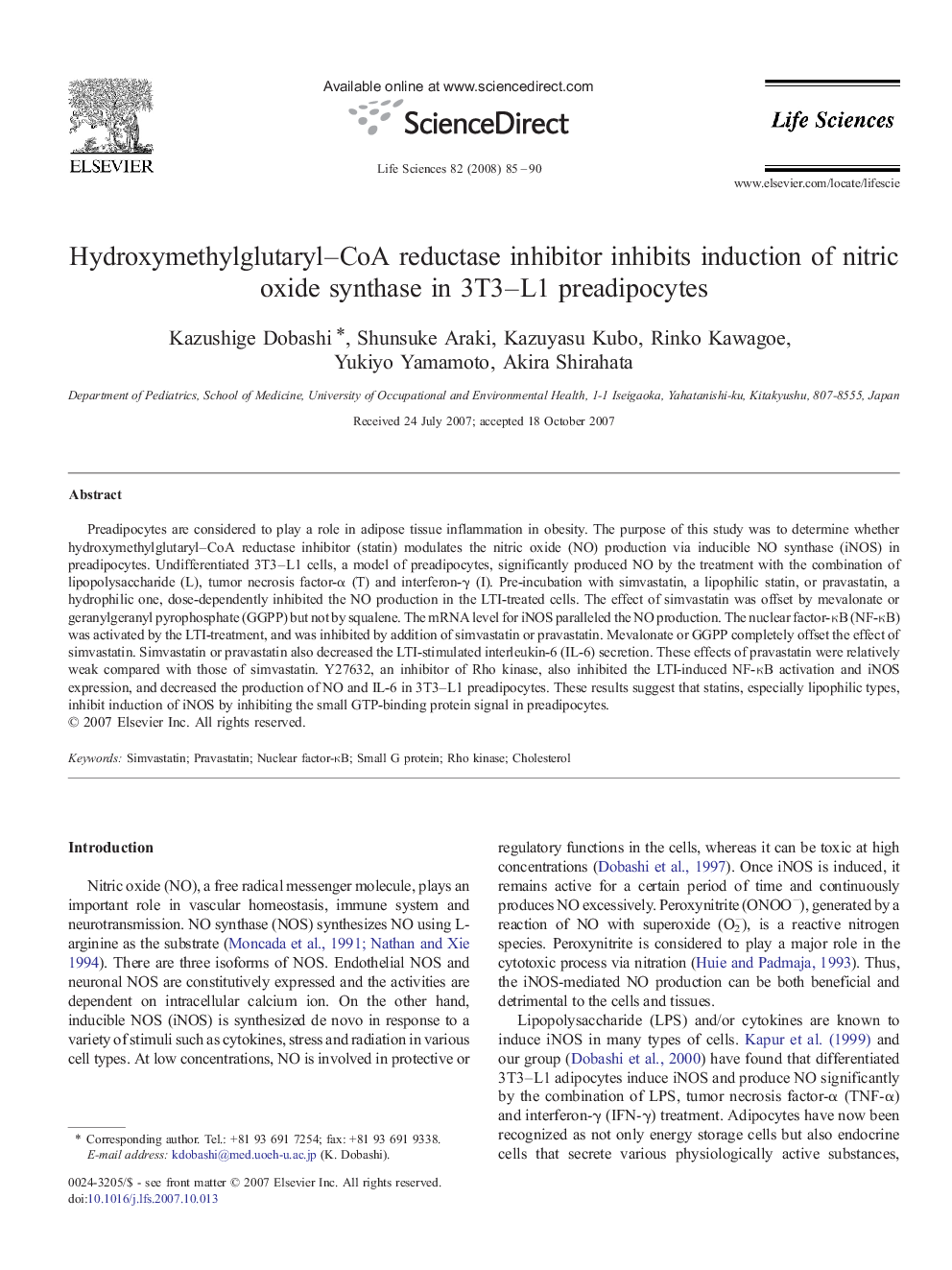| Article ID | Journal | Published Year | Pages | File Type |
|---|---|---|---|---|
| 2552970 | Life Sciences | 2008 | 6 Pages |
Preadipocytes are considered to play a role in adipose tissue inflammation in obesity. The purpose of this study was to determine whether hydroxymethylglutaryl–CoA reductase inhibitor (statin) modulates the nitric oxide (NO) production via inducible NO synthase (iNOS) in preadipocytes. Undifferentiated 3T3–L1 cells, a model of preadipocytes, significantly produced NO by the treatment with the combination of lipopolysaccharide (L), tumor necrosis factor-α (T) and interferon-γ (I). Pre-incubation with simvastatin, a lipophilic statin, or pravastatin, a hydrophilic one, dose-dependently inhibited the NO production in the LTI-treated cells. The effect of simvastatin was offset by mevalonate or geranylgeranyl pyrophosphate (GGPP) but not by squalene. The mRNA level for iNOS paralleled the NO production. The nuclear factor-κB (NF-κB) was activated by the LTI-treatment, and was inhibited by addition of simvastatin or pravastatin. Mevalonate or GGPP completely offset the effect of simvastatin. Simvastatin or pravastatin also decreased the LTI-stimulated interleukin-6 (IL-6) secretion. These effects of pravastatin were relatively weak compared with those of simvastatin. Y27632, an inhibitor of Rho kinase, also inhibited the LTI-induced NF-κB activation and iNOS expression, and decreased the production of NO and IL-6 in 3T3–L1 preadipocytes. These results suggest that statins, especially lipophilic types, inhibit induction of iNOS by inhibiting the small GTP-binding protein signal in preadipocytes.
